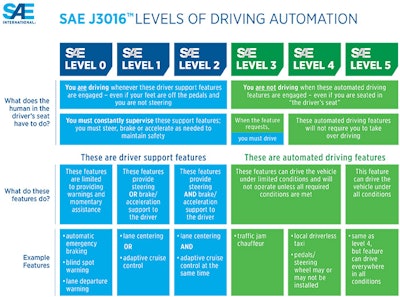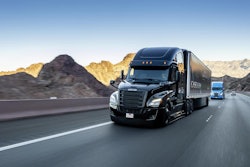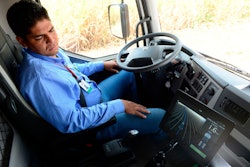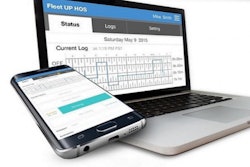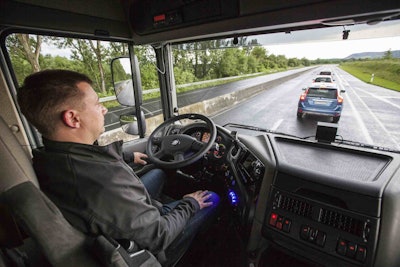
Despite some of the videos you may see on social media, cars and trucks do not drive themselves and likely won’t for a very long time.
There are important distinctions between the six levels of autonomous driving and “self-driving,” and a lot of people haven’t quite figured that out.
SAE International categorizes autonomous driving in levels 0-5. The higher the number, the less a human has to do behind the wheel. Level 5 is what would be considered self-driving since, in order to meet Level 5 criteria, the system would have to be able to drive in all weather and traffic conditions and couldn’t require human interaction for any reason.
Level 2-enabled systems are just now being widely deployed, but wrapped up in the sexiness of the term “self-driving,” they’re being abused by some users either through sheer ignorance or an over-reliance on not-ready-for-primetime technology.
The systems that enables safe and predicable “self-driving” simply do not yet exist and stretching Level 2 tech to Level 5 performance is both irresponsible and dangerous, because the computer is relying on its human for support – support that in a deadly crash in Florida in 2016 was watching a Harry Potter movie.
“From a [self-driving] perception standpoint, you naturally assume you don’t have to interact with the system, that the system is going to do everything that it needs to do regardless of what’s going on around the surrounding environment,” says Freightliner’s On-Highway Marketing Manager Clint LaPreze. “Whereas with automated driving, we’re automating certain features of that operation.”
Tesla’s AutoPilot system, arguably the most publicized and certainly among the most technologically advanced platforms available, doesn’t currently do anything remarkably different from the Detroit Assurance enabled, Level 2 capable 2020 Freightliner Cascadia. It just has a flashier name that insinuates that it does, and legions of devotees that will swear that it does.
“The danger of calling it ‘self-driving’ is that it nullifies the training and what the drivers are doing,” says Collin Shaw, Wabco’s director of marketing & business development.
Trucking’s migration toward automated driving has long been compared to the airline industry’s use of an auto-pilot system, but Bendix Director of Customer Solutions & Marketing-Controls Group T. J. Thomas notes that even with auto-pilot fully engaged, there are still two flesh-and-blood people on the flight deck at all times handling a variety of tasks related to safe flying.
“When you refer to it as automated there are still things, maybe they’re different than what a typical driver is used to doing, but somebody who is working with a more highly automated system still has a number of roles to fill,” Shaw adds. “And maybe when it comes to a more highly automated vehicle it’s not so much on the driving, but monitoring and understanding what’s happening in the environment [and] understanding what’s happening with your cargo.”
I’ve driven – or is it ridden? – using both of these systems. Their function is mostly similar, including baked-in warnings that beg the driver to re-engage if they remove their hands from the steering wheel for an extended period of time.
If the system was truly self-driving, it wouldn’t require the driver to prove they’re alert and the guy watching Harry Potter three year ago might not have slid underneath a semi-trailer at highway speed.
“The driver is still active in the seat. The driver is still the number one safety feature in the vehicle and they’re going to have control of it,” LaPreze adds of current commercially available autonomous technology. “The difference between automated systems or automated tasks versus self-driving is the perception of how somebody’s going to assume a certain technology works or does not work.”
Both the Tesla and Freightliner systems monitor lane markings and the traffic ahead, and can handle some steering input and throttle and brake application.
Each is a layer of tech designed to assist the driver, not replace them.
Despite that, you still see numerous YouTube videos of Tesla drivers reading books, sleeping in the back seat or, as came to light recently, producing an X-rated film after assigning responsibility for driving to their vehicle.
The fact these vehicles in some cases handle this extra responsibility is more attributable to luck than the system’s sophistication.
